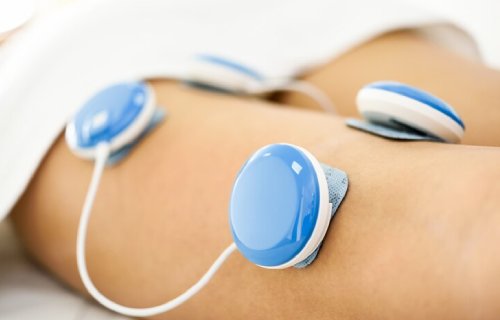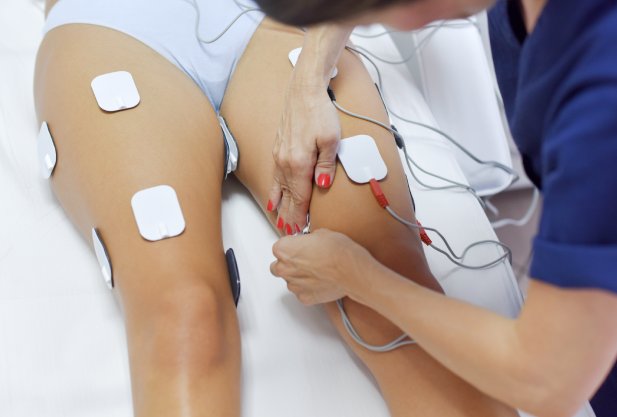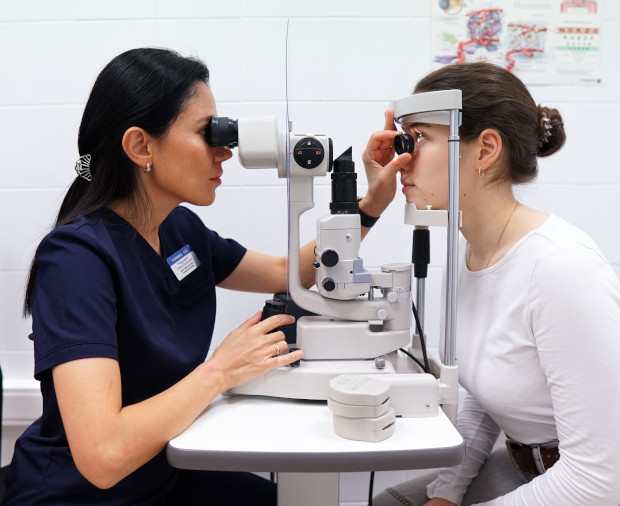Electroneuromyography (ENMG) of the pelvic floor muscles

specialists

equipment

treatment
Types of electroneuromyography of the pelvic floor muscles
Needle electroneuromyography
Needle electroneuromyography is performed using a thin needle-electrode that is inserted directly into the muscle fibers of the pelvic floor.
Before starting electroneuromyography, the doctor explains the procedure to minimize discomfort. The patient needs to relax, as this affects the accuracy of the results. During the procedure, the activity of the muscles at rest and during voluntary contraction is assessed. The data obtained make it possible to identify nerve damage, muscle dysfunction or muscle spasms.
Superficial electroneuromyography
This type of electroneuromyography (ENMG) is less invasive and is often used for primary diagnosis or monitoring of muscle condition during treatment. Electrodes are placed on the skin in the pelvic area, which makes the procedure absolutely painless.
The procedure is performed in a lying position, and the doctor uses equipment to measure the overall tone of the pelvic floor muscles, assess their ability to contract and relax. The results help to determine the degree of muscle weakness or hyperactivity.
Stimulation electromyography
Stimulation electromyography is used to assess the conduction of nerve impulses. Weak electrical discharges stimulate the nerves, and the equipment records the response of the muscles.
The procedure takes about 30-40 minutes. It is carried out on an outpatient basis and does not require special training. The results show the presence of damage to the nerve pathways, the degree of their recovery after injuries or operations.
Answers to popular questions
Important but non-obvious questions are often asked before electroneuromyography of the pelvic floor muscles. Here's what you need to know.
Can I exercise or be physically active after the procedure?
Yes, after electroneuromyography (ENMG), you can return to your normal life, including physical activity. However, if you used needle technology during the procedure, your doctor may recommend giving your muscles a rest for a day.
Can the results be inaccurate if I'm worried?
A slight excitement is normal and will not affect the results. However, excessive muscle tension can slightly skew the data, especially with needle electroneuromyography (ENMG).
Why do you need to examine the pelvic floor muscles if the problem seems "nervous"?
Electroneuromyography (ENMG) allows you to understand how muscle fibers and nerves work together. Even if the problem seems to be related only to the nervous system, the condition of the muscles can play a key role. For example, muscle weakness or spasms can be the result of improper transmission of signals along the nerves.

This award is given to clinics with the highest ratings according to user ratings, a large number of requests from this site, and in the absence of critical violations.

This award is given to clinics with the highest ratings according to user ratings. It means that the place is known, loved, and definitely worth visiting.

The ProDoctors portal collected 500 thousand reviews, compiled a rating of doctors based on them and awarded the best. We are proud that our doctors are among those awarded.
Make an appointment at a convenient time on the nearest date


































What is stimulation electromyography (ENMG)?
Stimulation electromyography (ENMG) is a diagnostic method that studies the functioning of peripheral nerves and muscles using electrical impulses.
The essence of the method is that electrodes send weak impulses to the nerves, and the equipment records their passage and the response of the muscles. This allows you to obtain information about the state of nerve fibers, the speed of impulses and muscle activity.